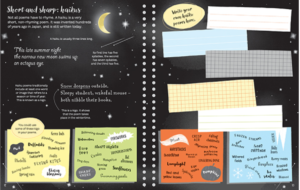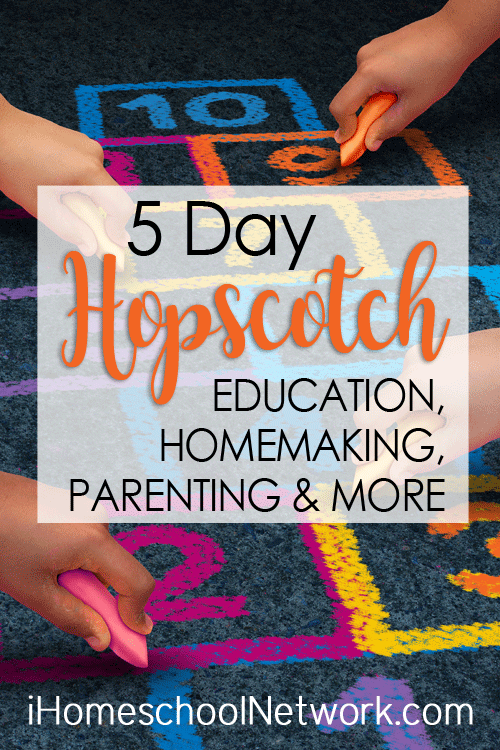[The following post contains affiliate links. You can read my disclosure here.]
For 5 days in a row, I’m sharing some Poetry Teatime inspiration. To learn more about what poetry teatime is, check out Julie Bogart’s video. You can even download a Poetry Teatime Quick Start Guide.
If you missed the first two in the Poetry Teatime Inspiration series, you can click on the links below:
DAY 3: How to Host a Poetry Teatime about Literary Language

One of the poems I’ve remembered since childhood was this simple one by Carl Sandburg.
A poem that is one simple metaphor. The literary language that gives life to the fog. I think kids are drawn to it with their vivid imaginations. So today let this literary language be the inspiration for your Poetry Teatime.
Poetry is the perfect way to introduce your children to literary language. No, you don’t need to do a formal lesson, but you can share what a term means and see if your kids can find it in a poem. So let’s start with some of the basics:
A Few Basic Literary Terms
- Alliteration—When a series of words in a row, or close together, start with the same beginning sound. “The clouds creep and crawl across the sky.” Or the title of this teatime inspiration: Learning Literary Language.
- Metaphor—A comparison of two things without using the words like or as. Instead the comparison is more direct. “The clouds were a blanket covering the stars.”
- Onomatopoeia—When a word imitates the sound the thing it is naming makes. Like tick-tock, or splish-splash, or meow.
- Personification—When an object or animal is given human characteristics. “The clouds crawled on bended knees across the sky.”
- Simile—A comparison using the words like or as. “The clouds were like a blanket covering the stars.”
The Teatime
When I hear the word literary I can’t help but think of a more formal type of tea. (Maybe because it reminds me of the episode from The Office about The Finer Things Club.) Or perhaps it’s the picture of English teas in the garden. I think it is the word literary. It just seems so British.
So for this teatime, think about setting your table with your finest dishes, a pretty tablecloth, and some flowers and candles. But if that doesn’t appeal to you, let your kids decorate in however they like.
Snacks
For some reason “literary” snacks just scream baked goodies to me. Or maybe some cucumber finger sandwiches…but I’ll leave you to decide if your children would rather have those or one of the following 😉
- Scones. You will find a video on how to make scones at Cooking Light along with several recipes. I love the cranberry ones. Are you gluten free? Check out these Glazed Blueberry Scones.
- Biscotti. My all-time favorite biscotti recipe is from Weight Watchers: Chocolate Chip-Cherry Biscotti. Yum!
- Cookies or brownies. Every time I make these Molasses Crinkles from an old Southern Living Cookbook people ask for the recipe, so I’m glad you can get the recipe online now. But if you prefer brownies instead of cookies, try this Best Brownies recipe. I don’t even make the frosting, and they are so good. I do add a handful of chocolate chips to the batter, though.
- Bar Cookies. Strawberry Oatmeal Bars from The Pioneer Woman…so good! I don’t think I’ve ever tried a recipe of her’s that I didn’t like. And she has a recipe for my childhood favorite, 7-Layer Cookies though we just add more chocolate chips instead of using any Butterscotch ones 🙂
Let’s face it. If you pair poetry with one of these desserts, how will your kids not associate poetry with good memories?!?
Tea, or not
- A new tea. Visit the tea aisle in your local grocery store and let your children pick out a new flavor to try.
- Stash Tea. I love Stash Teas. Often a local grocery store will carry them, but you can also order online. One of my personal favorites is the Sunny Orange Ginger Tea.
- No tea. Nothing goes better with cookies or brownies than a nice, cold glass of milk.
Ideas & Activites
- Do a Literary Language Scavenger Hunt. Write out the terms above and talk about the definition of each of them. Show them some examples like the poem, Fog, above. Then have your kids find a poem that exemplifies one or more of the terms. Ask them to see how many they can find.
- Read an example of a simile, metaphor, or personification in a poem. Then, have your kids draw a picture of what it would look like if they took it literally.
- Challenge them to write a poem that incorporates each of the literary terms above. Check out Usborne’s Write Your Own Poems
Poetry Collections
Any of these poetry collections will provide plenty of poems filled with literary language.
Poetry Teatime doesn’t have to be elaborate to be memorable. For your Learning Literary Language Poetry Teatime you can buy cookies at the store (our “fancy teatime” cookies were often Pepperidge Farm cookies). The important thing is to take the time to do it.





Trackbacks/Pingbacks